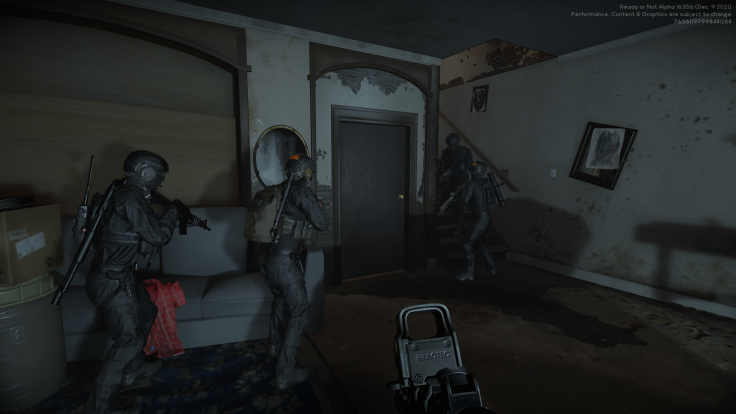'Ready Or Not': Important Tips For Beginners
KEY POINTS
- "Ready Or Not" is a tactical shooter that rewards good communication and teamwork
- NPC behavior differs per level
- Players are advised to adapt their strategy according to the needs of a mission
Even among other hardcore tactical shooters, “Ready Or Not” manages to stand out as a particularly difficult game. Thanks to the limited level of unpredictability with the AI, every encounter is a tense and nerve-wracking experience that will make players pay for even the tiniest mistakes.
“Ready Or Not” is difficult by design, and players should expect to retry its levels more than just a few times if they want to get perfect scores. Here’s a quick guide on the basics of room clearing, teamwork and crisis management for those who want to get better at playing this immersive SWAT game.
Slow And Steady
“Ready Or Not” is a slow and methodical game and should be treated as such if players want to succeed. Open every door, check every room, secure every corner and make sure that one team member is always watching the rear.
Pie Slicing
Before entering rooms, always try to scan each of them from all possible angles while remaining in cover by the doorway. Move from one side of the doorway to the other while keeping an eye on what’s inside the room — this is called Pie Slicing.
This method is a real CQB tactic used to help operators identify threats without putting themselves in danger. Unsurprisingly, this works in any tactical shooter, and it should always be used whenever possible.
Breaching Rooms
When breaching, try to stack up on the long side of a door to prevent the team from taking avoidable damage. Avoid standing directly in front of a door when using a battering ram or shotgun.

Have a breacher take point and a second man to prepare a stinger or flashbang. Breach the door, throw the grenade and flow inside. The point man should go toward the longest corner of the room while covering the rest of the team or eliminating immediate threats. Other team members should prioritize controlling the rest of the room by moving toward other corners while maintaining line of sight on their buddies and potential threats.
Lastly, try to have someone bring a Mirrorgun and check below every door before proceeding. This is especially useful as NPCs tend to stand directly in front of doors. Mirrorguns can also be used to check for tripwires.
© Copyright IBTimes 2024. All rights reserved.





















